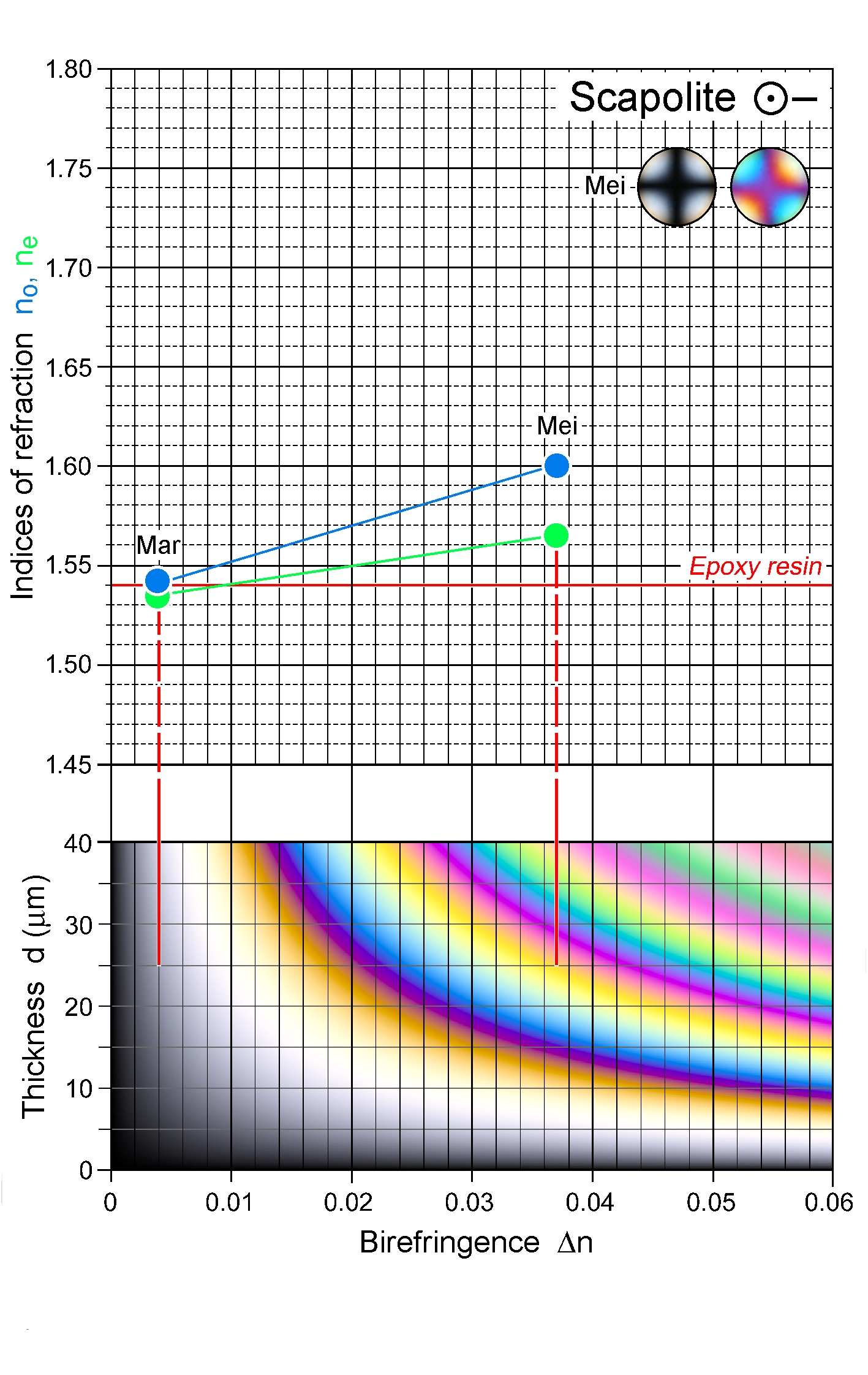|
| Formula | (Na,Ca)4(Al,Si)3Al3Si6O24(Cl,CO3,SO4) |
| | Optic class & sign | Uniaxial negative |
| | Relief | Low to moderate, positive |
| | Refractive indices | no = 1.540 -1.600
|
|
ne = 1.535 -1.565
|
|
| n increases with increasing meionite content |
| | Birefringence (max.) | 0.004 - 0.037 |
| | | Δn increases with increasing meionite content; chemical zoning may be present and is then indicated by variation of birefringence |
| | Sign of elongation | Length-fast, l (-) |
| | Interference figure | Slight anomalous isogyre separation (2V < 10°) may occur |
| | Colour / pleochroism | Colourless |
| | Zoning | |
|
|
| Form | Habit | Granular, elongate-prismatic, acicular |
| | | Surface | Euhedral to anhedral |
| | Cleavage | 2 sets {110}, good, at 90° and 2 sets {100}, fair, at 90° |
| | Twinning | None |
| | Extinction | Straight with respect to prismatic cleavages and prism faces in sections ∥ c |
|
|
| Reaction textures | |
| | Alteration / decomposition | Aggregates of sericite, calcite, chlorite, epidote, zeolites |
|
|
| Occurence | Ign | Nepheline syenites |
| | | Met | Calcschists, calcsilicate rocks, calcsilicate marbles, scapolite schists, where scapolite is either derived from primary rock compositions (e.g., meta-evaporites) or is due to metasomatism ("scapolitization"); metasomatised felsic to mafic rocks, skarns; meionite in felsic granulites |
| | | Sed | |
| | | Hyd | Veins |
| | | Other | |
|
|
| Distinctive properties | Prismatic cleavages, incipient alteration being common, habit if crystal faces are developed; birefringence of intermediate to meionitic members; marialite least distinctive due to low Δn and low n |
| | Additional comments | n and Δn ranges above include silvialite |
|
|

 Images
Images 


 Images
Images 
